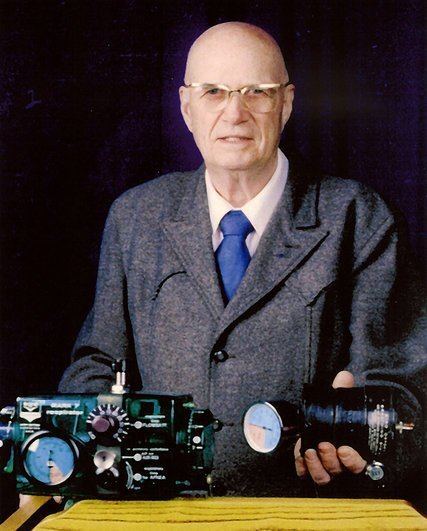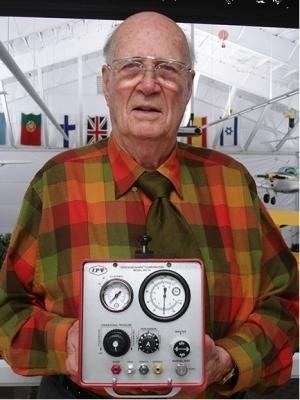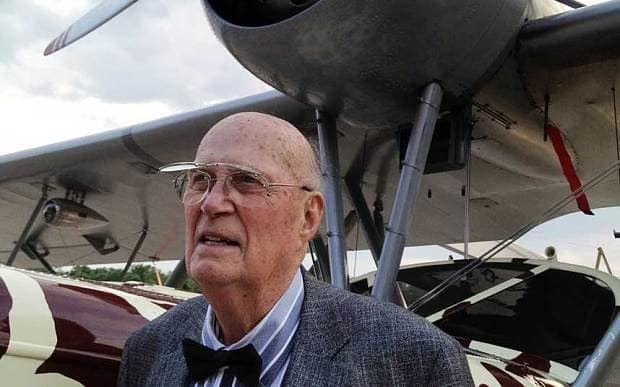Citizenship United States Role Aviator Name Forrest Bird | Academic advisors Andre Cournad Nationality United States | |
 | ||
Born June 9, 1921Stoughton, Massachusetts ( 1921-06-09 ) Education Doctor of Science in Aeronautics (1977)Doctor of Medicine (1979) Known for Bird Universal Medical Respirator (1958) Notable awards National Inventors Hall of FamePresidential Citizens MedalNational Medal of Technology and Innovation (2009) Fields Pulmonology, Intensive Care Medicine Alma mater Northrop University, Pontificia Universidade Catolica de Campinas | ||
Residence United States of America | ||
Dr forrest bird video biography movie trailer
Forrest Morton Bird (June 9, 1921 – August 2, 2015) was an American aviator, inventor, and biomedical engineer. He is best known for having created some of the first reliable mass-produced mechanical ventilators for acute and chronic cardiopulmonary care.
Contents
- Dr forrest bird video biography movie trailer
- Bull river valley and the dr forrest bird museum
- Biography
- The first Bird units
- Subsequent developments
- History of Bird Corp
- References

Bull river valley and the dr forrest bird museum
Biography

Bird was born in Stoughton, Massachusetts. Bird became a pilot at an early age due to the encouragement of his father, a World War I pilot, and from meeting Orville Wright at an early age. He performed his first solo flight at age 14. By age 16 he was working to obtain multiple major pilot certifications. Bird enlisted with the United States Army Air Corps, and entered active duty in 1941 as a technical air training officer due to his advanced qualifications. This rank, combined with the onset of World War II, gave him the opportunity to pilot almost every aircraft in service, including early jet aircraft and helicopters.

The newest models of aircraft were capable of exceeding altitudes at which humans can breathe, even with 100% oxygen supplementation, introducing the risk of hypoxia. Bird discovered that an oxygen regulator in a crashed German bomber he was ferrying back to the U.S. for study seemed to contain a pressure breathing circuit. He took the oxygen regulator home, studied it, and made it more functional. It became the standard design for high-altitude oxygen regulators for most military aircraft until recent time. Bird studied medicine " ... to understand the human body and its stress in flight". This led to him developing efficient respirators and ventilators.

In 1967, Bird developed the Bird Innovator, a conversion of the Consolidated PBY Catalina amphibian aircraft. His company was Bird Oxygen Breathing Equipment Inc, later renamed Bird Corporation, the aircraft being based at Palm Springs until 1976.

Bird resided in Sagle, Idaho, close to the Canada–US border which is where his home, production facilities, museum and ranch are located. Dr. Bird collected and restored old planes, old cars, and motorcycles.
Forrest and Pamela Bird opened the Bird Aviation Museum and Invention Center in July 2007, with aviator Patty Wagstaff cutting a ceremonial ribbon at the end of the runway while flying. The Bird's are the founders and owners of the museum, which showcases Bird's various aircraft and inventions. On December 10, 2008, Bird received the Presidential Citizens Medal from President George Bush. The United States honored him for his groundbreaking contributions and for his work to keep America at the forefront of discovery. On October 7, 2009, President Barack Obama awarded Bird the National Medal of Technology and Innovation, a recognition of his "outstanding contributions to the promotion of technology for the improvement of the economic, environmental or social well-being of the United States."
Bird died at the age of 94 of natural causes at his Sagle, Idaho home on August 2, 2015.
The first "Bird" units
Bird created a prototype ventilator unit which was tested on seriously ill patients with limited success. His first prototype consisted of strawberry shortcake tins and a doorknob. Most of these first units were sold to the Army, in the original format of tins and the doorknob. Further revision resulted in the 1955 release of the "Bird Universal Medical Respirator" (sold as the Bird Mark 7 Respirator and informally called the "Bird"), a small green box that became familiar to hospital patients soon after its introduction. The Bird Mark 8 added the capabilities of NEEP (Negative End Expiratory Pressure). This was frequently used to power a set of fluidic servos (sort of relays.) He subsequently made a ventilator for infants, nicknamed the "Babybird". This device was one of several devices that appeared on the market designed to effectively ventilate small children and infants. These devices played a significant role in reducing the rate of breathing-related infant mortality from 70% to 10%. The Bird Mark 7 Respirator is still in use around the world. In addition he produced the Fluid Control Device.
Subsequent developments
Bird won the Lifetime Scientific Achievement Award in 1985 and received another one in September 2005. He continued to contribute to the field of pulmonary science by participating in the development of the VDR, a ventilator that permits management of the most challenging patients including ARDS, trauma and inhalation injury. In 1995, Bird was inducted into the National Inventors Hall of Fame. He was named "Inventor of the Week" by MIT in February 2001. The American Respiratory Care Foundation names one of its annual awards after Bird.
